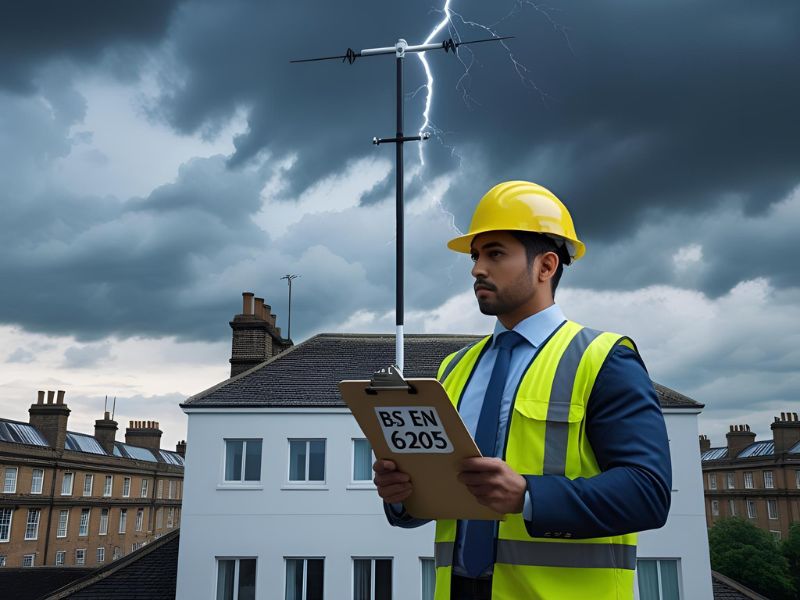
When storm clouds gather and lightning strikes become more frequent, many property owners find themselves asking a crucial question: do we actually need lightning protection by law? The answer isn't as straightforward as you might expect, and getting it wrong could have serious consequences for your property, your safety, and your legal compliance.
At Lightning Protection Testing UK, we regularly speak with confused property owners who've received conflicting advice about legal requirements. The truth is that lightning protection occupies a unique space in UK regulations – it's not automatically required, but specific circumstances can quickly make it a legal necessity rather than just a sensible precaution.
Let's start with some myth-busting. Generally, lightning protection isn't a legal mandate across all building types in the UK. For most residential properties and standard commercial buildings, installing a lightning protection system remains optional unless specific risk factors or regulations demand otherwise.
This might come as a relief if you're a homeowner worried about additional costs, or a business owner trying to understand your obligations. However, before you breathe that sigh of relief, you need to understand when this "optional" status changes dramatically.
The key word here is "generally." UK building regulations don't impose blanket requirements for lightning protection, but they do require property owners to assess and manage electrical risks appropriately. This risk-based approach means that while lightning protection might start as optional, a proper risk assessment could quickly reveal that it's actually essential for your specific situation.
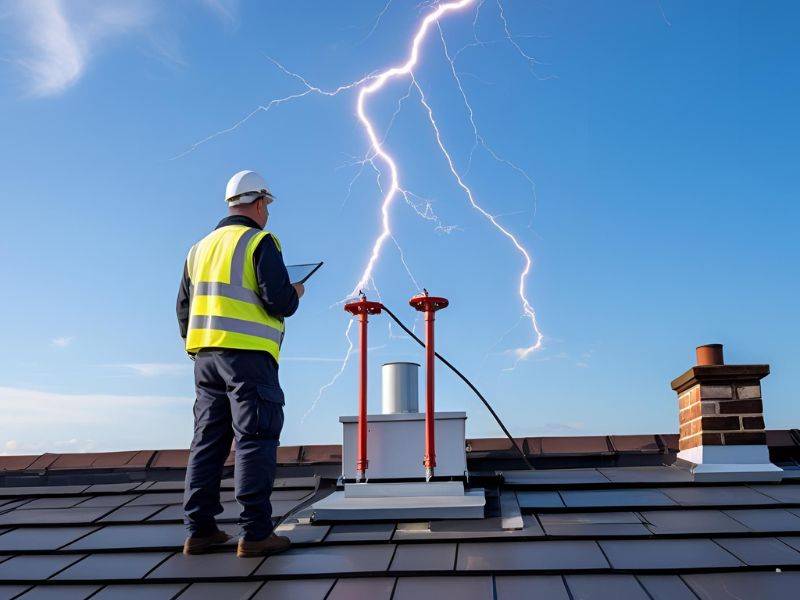
The transition from "nice to have" to "must have" happens more often than many people realise. Several regulatory frameworks can trigger mandatory lightning protection requirements, and we see these scenarios regularly in our work across the UK.
Workplace Safety Obligations
Under the Electricity at Work Regulations 1989, employers carry legal obligations that many don't fully understand. If you operate any kind of workplace – from a small office to a large hospital – you must consider lightning protection if lightning poses a hazard to your building or the people inside it.
This isn't just about obvious high-risk locations. We've worked with office blocks where a comprehensive risk assessment revealed that the building's height, location, and internal systems created a significant risk that required immediate attention. The legal requirement kicks in not because of the building type, but because of the identified hazard.
Fire Safety Legal Requirements
Fire risk assessments, required under the Regulatory Reform (Fire Safety) Order 2005, frequently identify lightning as a potential ignition source. When this happens, installing lightning protection often becomes a regulatory necessity rather than a recommendation.
We've seen this scenario play out repeatedly: a routine fire risk assessment flags lightning strikes as a credible threat to the building's safety, and suddenly what seemed like an optional upgrade becomes a legal obligation. Building owners who ignore these findings face not just increased insurance premiums, but potential legal action if incidents occur.
Certain industries and building types operate under stricter regulations that make lightning protection virtually guaranteed. If your business involves dangerous substances, explosive materials, or operates as part of critical infrastructure, you're likely looking at mandatory requirements.
COMAH and DSEAR Compliance
Facilities covered by COMAH 2015 (Control of Major Accident Hazards) and DSEAR 2012 (Dangerous Substances and Explosive Atmospheres) regulations must implement comprehensive safety measures. In these environments – think chemical plants, fuel storage facilities, or sites handling explosive materials – lightning protection becomes a legal requirement, not a choice.
The chemical industry particularly recognises that a single lightning strike can trigger catastrophic incidents. We work extensively with these facilities to ensure their lightning protection systems meet not just basic safety requirements, but the enhanced standards these critical environments demand.
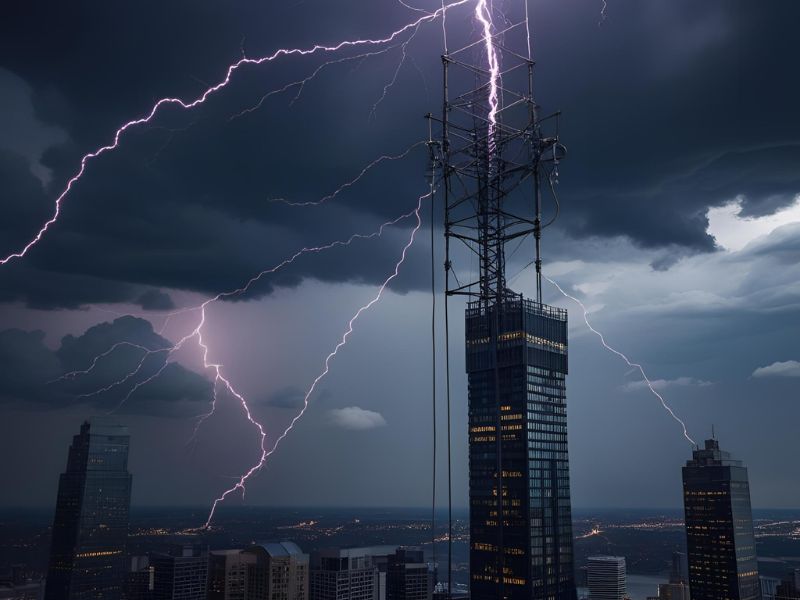
Critical Infrastructure and Sensitive Systems
Buildings housing sensitive electronic systems, critical infrastructure, or emergency services often face additional requirements. While not always explicitly stated in regulations, the duty of care and operational continuity requirements effectively mandate proper lightning protection.
High rise buildings present particular challenges. As structures extend skyward, they naturally become more attractive to lightning strikes, and the potential for damage to internal systems increases dramatically. Many high rise buildings that initially seemed exempt from requirements find themselves needing comprehensive protection after proper assessment.
Historic buildings occupy a special category in lightning protection requirements. While Historic England strongly recommends installing lightning protection for churches, historic towers, and prominent buildings, the legal picture here is more complex than simple recommendation.
Listed buildings and structures in conservation areas face additional scrutiny. Planning permission requirements often include provisions for protecting the historic fabric of buildings, and lightning damage represents one of the most serious threats to historic structures. We've worked on numerous historic buildings where heritage protection requirements effectively created legal obligations for lightning protection.
The intersection between heritage protection and safety regulations means that historic buildings often find themselves subject to higher standards than newer structures. Insurance companies increasingly recognize this reality, with many requiring lightning protection as a condition of coverage for older buildings.
While building regulations don't mandate universal lightning protection, they do require compliance with relevant British standards when protection is installed. For those asking what is BS EN 62305, it provides the technical framework for lightning protection systems, covering everything from risk assessment methodology to installation details.
The standard takes a comprehensive approach to lightning protection needs, considering factors like building height, location, contents, and occupancy. Questions such as at what height does a building require lightning protection are addressed through the standard’s detailed risk assessment process. When electrical and electronic systems are critical to building operations, BS EN 62305 often reveals risks that weren't immediately obvious.
We regularly encounter situations where building owners assumed they were exempt from requirements, only to discover that proper application of BS EN 62305 revealed significant risks requiring immediate attention. The standard's risk assessment process is thorough, considering not just direct lightning strikes but also lightning induced surges that can damage sensitive electronic systems.
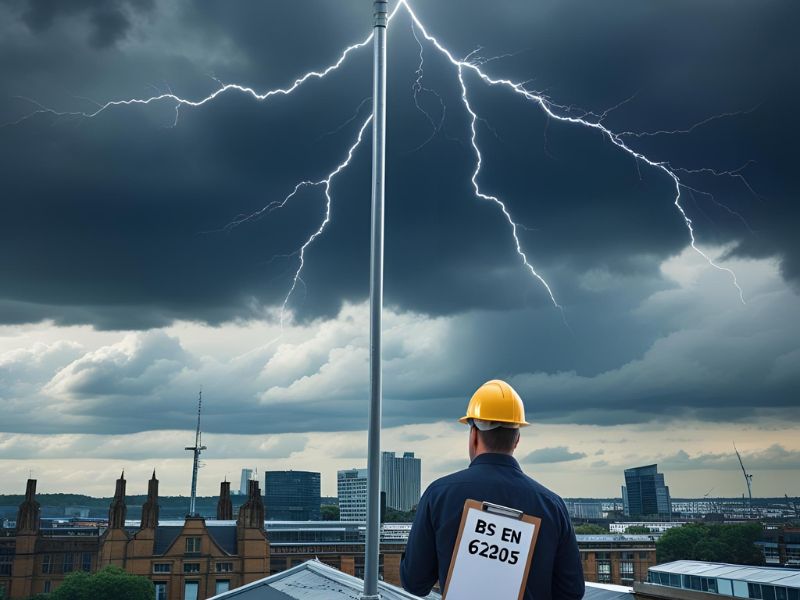
A thorough risk assessment forms the cornerstone of lightning protection compliance. This isn't just a box-ticking exercise – it's a comprehensive evaluation that protects both your legal position and your property.
Professional Assessment Requirements
Risk assessments must consider multiple factors: geographical location, building height and construction, occupancy patterns, and the presence of sensitive equipment. The assessment also evaluates the lightning protection system installed (if any) and identifies gaps in coverage.
Professional assessments examine all the main components of lightning risk: direct strikes, nearby strikes, and induced surges. Each presents different challenges and requires different protection strategies. A comprehensive risk assessment identifies which risks apply to your specific situation and recommends appropriate mitigation measures.
Documentation and Compliance
Maintaining proper documentation proves crucial for demonstrating compliance with legal requirements. Risk assessments should be reviewed regularly, particularly when building use changes or new electronic systems are installed. Regular testing of existing systems ensures continued effectiveness and legal compliance.
We maintain detailed maintenance logs for all the systems we service, providing building owners with the documentation they need to demonstrate ongoing compliance. These records prove particularly valuable during insurance claims or regulatory inspections.
Insurance requirements often create practical legal obligations that extend beyond formal regulations. Many commercial insurance policies now include specific requirements for lightning protection, particularly for buildings with sensitive electronic systems or those in high-risk locations.
Commercial Property Insurance
Commercial property insurers increasingly view lightning protection as essential risk management. Buildings without adequate protection may face higher premiums, coverage exclusions, or outright policy refusal. This economic pressure often creates practical legal obligations that formal regulations don't explicitly require.
The insurance industry recognizes that modern buildings contain more sensitive equipment than ever before. Electronic systems that control everything from HVAC to security can suffer extensive damage from relatively minor electrical disturbances. Insurers respond by requiring protective measures that minimize their exposure to these risks.
Professional Liability Considerations
Building owners and managers face potential liability exposure if they fail to implement reasonable safety measures. While lightning protection might not be explicitly required by law, failing to assess and address obvious risks could result in negligence claims if damage occurs.
This liability extends beyond property damage to business interruption and third-party claims. A lightning strike that damages critical systems can shut down operations for days or weeks, with financial consequences that extend far beyond the original repair costs.
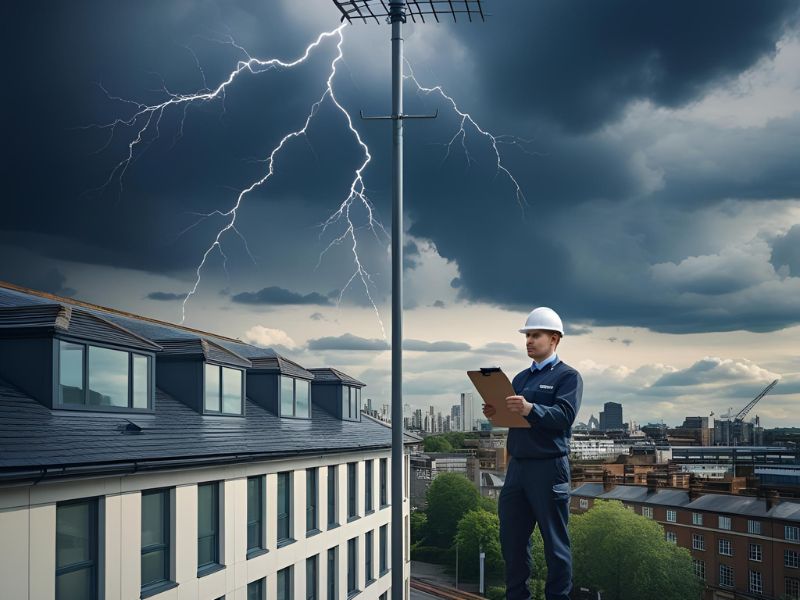
When lightning protection becomes necessary – whether through legal requirement or practical necessity – proper implementation becomes crucial. A lightning protection system installed incorrectly provides little benefit and may actually create additional hazards.
System Components and Design
Effective lightning protection requires careful integration of air terminals, down conductors, and grounding systems. Each component must be properly sized and positioned to provide effective protection without creating new risks.
The design process considers the specific characteristics of each building, including construction materials, occupancy patterns, and the presence of sensitive equipment. Modern lightning protection system design also accounts for electromagnetic compatibility, ensuring that protective measures don't interfere with building operations.
Professional Installation Requirements
Professional installation ensures compliance with BS EN 62305 and relevant safety regulations. Improper installation can render protection ineffective and may actually increase risks by creating unexpected electrical paths or electromagnetic interference.
Installation must also consider ongoing maintenance requirements. Access points for visual inspection and testing should be incorporated into the design, and installation details should be properly documented for future reference.
Installing lightning protection creates ongoing legal obligations for maintenance and testing. These requirements ensure continued effectiveness and compliance with safety regulations.
Regular Testing Requirements
Lightning protection systems require regular testing to verify continued effectiveness. For those wondering how often should lightning protection be tested, visual inspection identifies obvious damage or deterioration, while electrical testing verifies system integrity and performance. Regular testing schedules depend on building type and risk level, with critical systems requiring more frequent attention.
We recommend annual inspections for most systems, with more frequent checks for high-risk environments or buildings with critical systems. Testing should follow established procedures and be documented properly to demonstrate ongoing compliance.
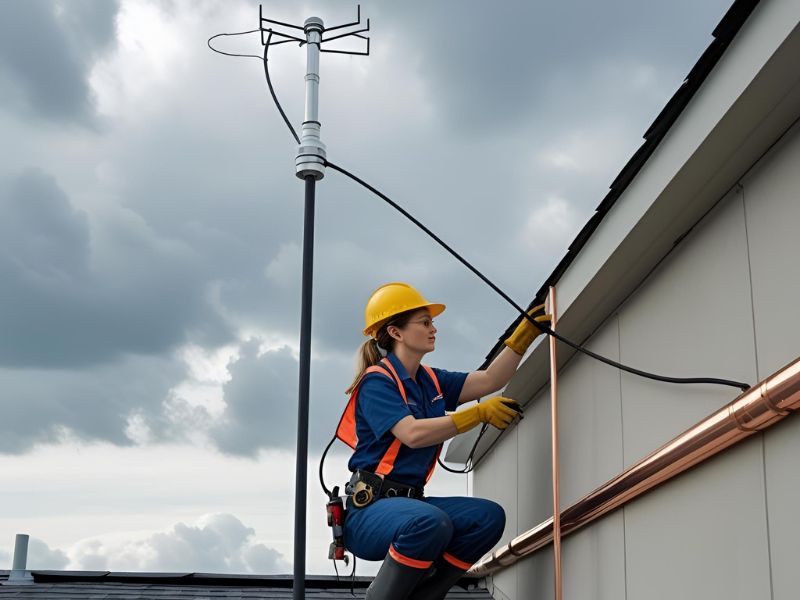
Maintenance Logs and Documentation
Proper documentation proves essential for maintaining legal compliance. Maintenance logs should record all inspections, tests, and repairs, providing a complete history of system performance and maintenance.
These records prove particularly valuable during insurance claims or regulatory inspections. They demonstrate that building owners have fulfilled their ongoing obligations and maintained systems in proper working condition.
Given the complexity of lightning protection requirements and the serious consequences of getting them wrong, professional consultation often provides the most reliable path to compliance. Expert guidance helps building owners understand their specific obligations and implement appropriate solutions.
Expert Assessment Benefits
Professional assessment provides objective evaluation of lightning protection needs and legal obligations. Experts understand the complex interplay between different regulations and can identify requirements that might not be immediately obvious to building owners.
Professional assessment also provides valuable documentation for insurance and regulatory purposes. Independent expert opinions carry significant weight with insurers and regulators, potentially reducing premiums and simplifying compliance demonstrations.
Compliance Verification
Professional services can verify that existing systems meet current requirements and identify any gaps in protection or compliance. This proves particularly valuable for building owners who inherited existing systems or those facing changed circumstances that might affect their obligations.
Professional verification also provides peace of mind that legal obligations have been properly addressed. This assurance proves particularly valuable for building owners facing complex regulatory environments or those with significant liability exposure.
While cost considerations play a role in lightning protection decisions, understanding the full financial picture requires looking beyond initial installation expenses. Questions like how much does lightning protection installation cost in the UK are important, but the cost of compliance must be weighed against the potential costs of non-compliance, including property damage, business interruption, and legal liability.
Installation Investment Analysis
Lightning protection installation costs vary significantly depending on building size, complexity, and protection requirements. However, these costs typically represent a small fraction of the building value they protect, and the investment often pays for itself through reduced insurance premiums and avoided damage costs.
Professional installation also ensures that systems meet all relevant requirements the first time, avoiding costly repairs or modifications later. Proper design and installation minimize ongoing maintenance costs and ensure long-term reliability.

Long-term Financial Benefits
Beyond avoiding costly repairs from lightning damage, proper lightning protection provides ongoing financial benefits. Insurance premium reductions often offset installation and maintenance costs over time, particularly for commercial properties or those in high-risk areas.
Lightning protection also protects the substantial investment in electronic systems that modern buildings contain. Replacing damaged computer networks, security systems, or building management systems can cost far more than preventive protection measures.
Lightning protection requirements continue to evolve as technology advances and understanding of risks improves. Building owners benefit from understanding likely future developments and ensuring their systems can adapt to changing requirements.
Technological Developments
Modern buildings contain increasingly sophisticated electronic systems that may be more vulnerable to lightning damage than older equipment. As these systems become more critical to building operations, protection requirements may become more stringent.
Smart building technologies, renewable energy systems, and electric vehicle charging infrastructure all create new protection challenges that may drive future regulatory changes. Building owners who anticipate these developments can implement solutions that accommodate future requirements.
Regulatory Evolution
Safety regulations evolve continuously as understanding improves and new risks emerge. Climate change may increase the frequency and severity of thunderstorms in some areas, potentially leading to enhanced protection requirements.
International harmonization of standards may also drive changes in UK requirements. Building owners who understand these trends can make informed decisions about protection investments and ensure their systems remain compliant as requirements evolve.
Understanding whether lightning protection is a legal requirement for your specific situation requires professional assessment of your building, its use, and the applicable regulations. The stakes are too high to guess, and the regulations too complex to navigate without expert guidance.
As a trusted lightning protection company, Lightning Protection Testing UK, we provide comprehensive assessment services that evaluate your legal obligations and recommend appropriate solutions. Our team understands the complex regulatory landscape and can help you navigate the requirements that apply to your specific situation.
Don't wait for a lightning strike to discover you needed protection. Contact Lightning Protection Testing UK today for a free quote and comprehensive assessment of your lightning protection needs. We'll help you understand your legal obligations and implement solutions that protect your property, your people, and your compliance status.
Get your free lightning protection assessment from Lightning Protection Testing UK – because when it comes to safety and compliance, you can't afford to take chances.